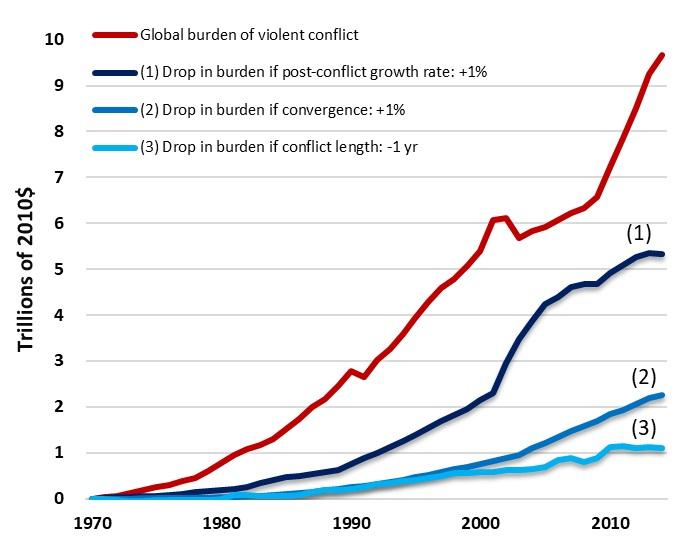In today’s rapidly evolving battlefield, the difference between triumph and defeat often hinges not just on firepower or strategy, but on the seamless orchestration of logistics. Modern military success depends as much on the behind-the-scenes efficiency of supply chains, transportation, and resource management as on the front-line tactics executed by troops. In this article, we’ll explore how logistics has transcended its traditional support role to become a decisive factor in contemporary warfare, driving operational readiness, agility, and ultimately victory. Whether it’s fueling advanced weaponry, ensuring timely reinforcements, or adapting to dynamic combat environments, logistics stands as the silent force powering modern military achievements.
Table of Contents
- The Strategic Role of Supply Chain Management in Modern Warfare
- Enhancing Operational Efficiency Through Advanced Logistics Technologies
- Adapting Logistics to Dynamic Combat Environments for Sustained Success
- Key Recommendations for Building Resilient Military Logistics Networks
- Closing Remarks
The Strategic Role of Supply Chain Management in Modern Warfare
In today’s battlefield, success is no longer dictated solely by troop strength or weaponry advancements but hinges critically on the sophistication of military logistics. Seamless supply chain management ensures that troops receive essential resources—from ammunition and fuel to advanced technology and medical supplies—right when and where they need them. The ability to anticipate, adapt, and respond swiftly to changing combat conditions transforms supply chains into strategic assets that sustain operational momentum and prevent debilitating shortages. Modern military logistics integrates cutting-edge tracking systems, predictive analytics, and autonomous delivery platforms, making the supply chain not only a support mechanism but a decisive force multiplier.
Key components of this evolved supply chain strategy include:
- Real-time data transparency across all military units, enabling agile decision-making and resource allocation
- Robust risk management protocols that safeguard critical supply routes from disruption or enemy interference
- Interoperability between allied forces to optimize joint operations and resource-sharing
- Emphasis on sustainability to reduce logistical footprints while maintaining operational effectiveness
As warfare rapidly evolves, those who master the art of integrated, responsive logistics will not only maintain an edge but define the future shape of power projection and battlefield dominance.
Enhancing Operational Efficiency Through Advanced Logistics Technologies
In the fast-paced realm of military operations, the integration of cutting-edge logistics technologies has revolutionized how supply chains are managed and executed. Real-time data analytics, AI-driven forecasting, and autonomous transport systems now ensure that resources reach their destinations with unparalleled speed and precision. By leveraging these tools, military logistics units can dynamically adjust supply routes, optimize inventory levels, and anticipate operational demands before they escalate, drastically reducing downtime and preventing critical shortages on the battlefield.
Key advancements that contribute to this enhanced efficiency include:
- Internet of Things (IoT) Sensors: Providing continuous monitoring of cargo conditions and vehicle status.
- Machine Learning Algorithms: Improving predictive maintenance schedules, minimizing equipment failures.
- Blockchain Technology: Ensuring secure, transparent tracking of assets throughout the supply chain.
- Unmanned Aerial Vehicles (UAVs): Facilitating rapid delivery in high-risk or inaccessible zones.
Such innovations not only streamline logistics operations but also empower commanders with actionable insights, making logistical support a formidable force multiplier that directly impacts mission success.
Adapting Logistics to Dynamic Combat Environments for Sustained Success
In modern military campaigns, logistics is no longer a static backend operation but a dynamic force that adapts swiftly to evolving combat scenarios. Commanders rely on real-time intelligence and agile supply chains to ensure troops receive critical resources when and where they are needed most. Flexibility in logistics means deploying modular supply units that can rapidly relocate, using advanced tracking systems to monitor assets continuously, and predicting emerging bottlenecks before they impact mission success. This proactive approach transforms logistics from a mere support role into a decisive factor that can shape the battlefield’s outcome by keeping forces resilient and relentless.
The complexity of today’s combat environments demands logistics systems capable of managing multiple challenges simultaneously. Key elements include:
- Integration with joint and coalition forces to streamline resource allocation and avoid duplication.
- Utilization of autonomous vehicles and drones for rapid resupply in high-risk zones without exposing personnel.
- Adaptive supply planning that accounts for uncertain terrain, weather conditions, and enemy actions.
- Robust cyber-secure communication networks maintaining continuous contact across dispersed units.
Together, these capabilities empower commanders to maintain momentum and sustain operations over prolonged periods—turning logistical agility into a competitive advantage on the modern battlefield.
Key Recommendations for Building Resilient Military Logistics Networks
Establishing a logistics network capable of withstanding the volatility of modern warfare requires a strategic emphasis on adaptability and redundancy. Military planners must prioritize the integration of advanced technologies such as predictive analytics and real-time supply chain monitoring systems. These tools enable commanders to anticipate disruptions and reroute resources efficiently under pressure. Equally critical is fostering a robust training regimen that educates personnel on rapid problem-solving and contingency management, ensuring that human factors complement technological advancements for seamless logistical execution.
Resilience also stems from cultivating diverse supply channels that mitigate dependence on any single source or route. This can be achieved by:
- Developing local and regional sourcing partnerships to reduce transit times and geopolitical risks.
- Implementing modular and scalable infrastructure that can be quickly reconfigured during crises.
- Regularly conducting stress tests and wargaming exercises that expose potential vulnerabilities.
By embracing these multifaceted approaches, logistics networks transform into dynamic systems capable of sustaining operations even amid adversity, ultimately becoming a decisive element in modern military success.
Closing Remarks
In the complex theater of modern warfare, logistics remains the unsung hero behind every triumphant campaign. From ensuring timely supply chains to enabling rapid troop movements, the strategic orchestration of resources can decisively tip the scales between victory and defeat. As technology evolves and battlefields become more dynamic, the role of logistics will only grow in significance, underscoring the fact that success in military operations is as much about what happens behind the scenes as what unfolds on the front lines. Embracing this reality not only reshapes how we understand military strength but also highlights the critical need for innovation and precision in the art of logistics.












